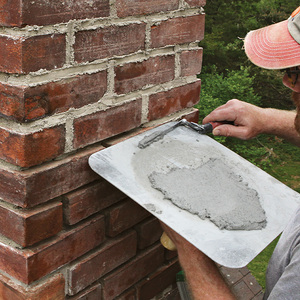Proper flashing for an existing skylight
A good customer of mine has 2 skylights that were leaking over the winter. They had a roofer do a caulking fix as a temporary solution. Anyway, they’ve been trying to get a real roofer to come and look at it, but noone seems interested in a 1 day job. So they called me.
Both skylights are 24″x24″. The existing flashing is just some simple L bends with shingles butted up against.
The customer has 4-5 bundles of matching shingles.
In the time of chimpanzees I was a monkey.



















Replies
dustin, I take it these are not a Velux type skylight?
A long time ago we had to install curb type plastic bubble skylights. We step flashed to the curb, then used a continuous counter flashing from the top of the curb over the steps. The bubble had a decent lip that counterflashed the counterflashed curb. The weekpoint was the fastening of the bubble flange to the top of the curb. At the time we didn't use any bituthane which would have been a good addtion to the install. We ended up roofgoof dabbing of the anchors. It still sits on that roof, no leaking. Must be 30 years.
A real decent job should be done on the head counterflashing. Maybe look at the bends of the velux counter flash for an idea of the proper method. I'm sure they have details on their site, they have some good ones in their full line catalogue.
A great place for Information, Comraderie, and a sucker punch.
Remodeling Contractor just outside the Glass City.
Quittin' Time
They aren't Velux. They're cheap bubble style.In the time of chimpanzees I was a monkey.
How old are they?
If they're more than 10-15 yrs. old, I wouldn't bother trying to get them water-tight. You'd be much better off replacing them with Velux units.
And they'd come with a nice, new warantee and decent flashing.
A bit of shingle removal, high step flashing, well bent counterflash (maybe salvage of what you have on there now-do copy the bends and forming of Velux) and bed the bubble flange on a strip of I&W.
Really concentrate on the head and "bottom" counterflash. Good points of melted water entry with snow buildup.A great place for Information, Comraderie, and a sucker punch.
Remodeling Contractor just outside the Glass City.
Quittin' Time
I'm gonna include stuff like this in my TIPIFEST siminar.
Andrew Douglas: What have you been up to? Jim White: Killin' time... It just won't die.
http://grantlogan.net/
####, you aren't going to point me out as the dumb ####, are you.
####. #### .... #### .... ####!A great place for Information, Comraderie, and a sucker punch.
Remodeling Contractor just outside the Glass City.
Quittin' Time
maybe Dustin can wait to fix those skylights until after SeeYou's demonstration at TipiFest.
I've done very little metal work. It sounds interesting.
These member demo's are really the clincher. The fun is good, but the education is a deduction.A great place for Information, Comraderie, and a sucker punch.
Remodeling Contractor just outside the Glass City.
Quittin' Time
Learning is good.
I just hope there won't be a test.
So what's your question?
Most skylights come with a flashing kit to properly install the unit.
And skylights on low-pitched roofs need a special flashing to raise the skylight up to a decent pitch.
You should be able to do both in a day if you have decent access to them.
I like to use Ice&Water strips around the lights to help seal them better.
You could search through the archives for that article describing how to bend a corner flashing piece with no cuts in it...;-)
I'll agree that if you switch them out for Velux deck mounted skylights (15 degree or steeper needed) then the flashing kits are very effective and very simple to install.
My roofer just did two curb skylights and a woodstove chimney on a metal roof for me. They used a couple of different flashings that I ordered from the supplier and did some nice sheetmetal work to put it all together. Not something I would do myself.
The trick is to use these corner flashings at all four corners. Remove all the shingles and the skylight itself. Work from the bottom up (of course), shingling as you go. First shingle up to the bottom of skylight. Bottom then gets an L bend of flashing, cut with aprons up the side. Then the corners. Then step flash and shingle up the sides. More corners and an L with apron on top. Avoid nails through the top flashing any where near the skylight (depending on the pitch of the roof, and the amount of leaves you get). Depending on where the gaps fall, you may have to glue on some shingles or leave the flashing bare at the top. The only iffy joint is the corner at the top, but the little ridges in the corner flashing keep water from infiltrating.
(I'm just a home owner, not a roofer. But I've got 10 skylights, and every one of them leaked after the "real" roofers were gone.)